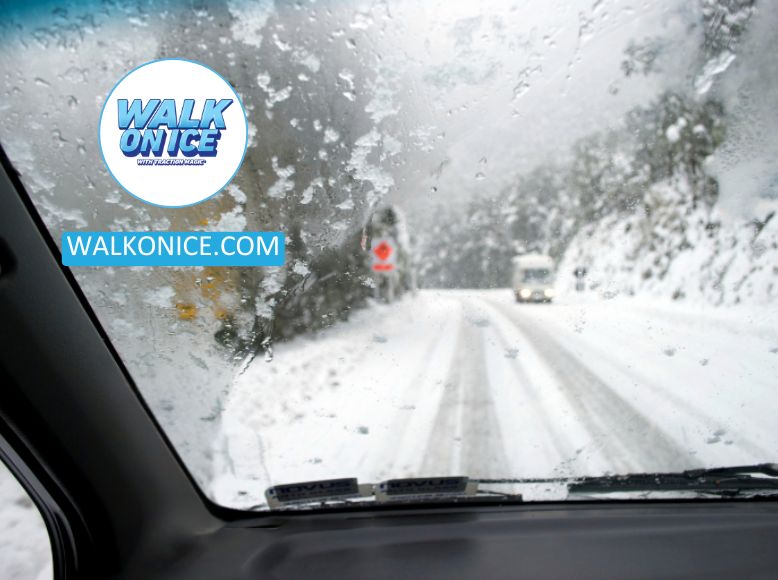5 Homemade Deicer Recipes For Quick Ice Removal

Hey there, fellow ice battlers! Trust me you are not the only one if you are standing and staring at heavy ice loads fallen onto your driveway and everywhere else thinking “I need to remove this with immediate effect”. We’ve all been there, mixing up homemade deicer concoctions in a bid to avoid the Bambi-on-ice routine. But let’s have a real talk about these DIY deicers – they’re like those home remedies we try, knowing well the doctor’s advice might be the better option. And that’s where ‘Walk On Ice’ comes into play, but more on that in a bit. First, let’s dive into the world of deicer homemade recipes and their quirks.
1. Salty Water: The Old Reliable?
Starting with the classic – the saltwater mix deicer homemade. It’s like the duct tape of winter solutions, right? But here’s the rub: too much salt can wreak havoc on your plants and furry pals’ paws. And your concrete? It might just start looking like the surface of the moon, all cratered and rough.
2. Rubbing Alcohol: The Strong Silent Type
Next up, rubbing alcohol. It’s like that strong, silent type at the party – does the job, but sometimes too well. Mix it with water, and you’ve got a potent ice melter. But remember, it can be as harsh on your surfaces as it is on the ice.
3. Dish Soap: Slippery When Wet
Dish soap, rubbing alcohol, and hot water – sounds like a weird cocktail, right? It’s a popular DIY mix but can be a bit of a double-edged sword. Sure, it’ll help melt the ice, but it can also turn your driveway into a sudsy slip-n-slide.
4. The Beet Juice Solution: Nature’s Deicer
Ah, the eco-warrior’s choice – sugar beet juice. It’s got a sweet side, being more environmentally friendly and all. But let’s face it, it’s not something most of us have just lying around in our pantry, and it might not be the strongest warrior in the battle against thick ice.
5. Vinegar: The Sour Side Of Deicing
Then there’s the vinegar and water mix. It’s like using lemon to clean – natural, but with a questionable success rate. Plus, the smell might just turn your winter wonderland into a bit of a pickle.
The Homemade Deicer Dilemma
While whipping up these deicer homemade recipes might give you a sense of accomplishment, they often come with a side of not-so-great consequences. From environmental concerns to potential damage to your property, these solutions are like a band-aid – fine for a small scrape, not so much for a bigger wound.
Get ready for winter with Walk On Ice instant traction on snow and ice
Enter ‘walk On Ice’: The Trusty Sidekick
This is where ‘Walk On Ice’ swoops in to save the day. When traditional deicers and homemade mixes fall short, this handy canister is a winter lifesaver. Think of it as your reliable sidekick, ready to provide instant traction on ice, even in those super chilly temps where salt just gives up. It’s safe for your furry friends, kind to your concrete, and as natural as a winter solution can get.
Beyond Diy: Why A Safe Deicer For Concrete Matters
Now, while vinegar sprays and salty water mixes might sound clever in the moment, there’s a bigger question worth asking: what’s the safest way to protect your driveway or walkway long-term? Concrete doesn’t like harsh chlorides. Over time, salt-based deicers chip away at the surface, leaving cracks and crumbles. That’s where using a safe deicer for concrete makes all the difference. Products designed with concrete in mind won’t corrode or weaken it, saving you from costly repairs come spring. It’s not just about melting ice—it’s about keeping the foundation of your home’s pathways intact.
And here’s where strategy plays in: pairing a safe melt (like Safe Paw) with a traction booster (like Walk On Ice) means you’re tackling two different winter challenges—melting and gripping. Think of them as teammates: one clears the danger, the other gives you confidence underfoot.
Walking On Snow And Ice: Tips That Actually Work
Homemade mixes may take the edge off icy surfaces, but they don’t teach us how to move smartly on them. And let’s be honest, most slip-and-fall accidents happen not because there wasn’t some deicer down, but because we weren’t walking carefully. So, what should you do when you’re walking on snow and ice?
First, shorten your stride—think “shuffle,” not “strut.” Keep your weight slightly forward and your arms free to balance. Many people also wonder how to walk on ice without falling, and the answer is all about posture. Imagine you’re balancing a book on your head: upright, steady, and no sudden twists. Combine that body awareness with traction support, and you’ve drastically reduced your risk of taking a tumble.
The Pros And Cons Of Using Sand On Roads
Of course, no winter survival guide would be complete without touching on the old favorite: sand. Cities have used sand for decades to make icy roads less deadly, and yes—it does work by creating a gritty layer for tires and shoes to grip. But here’s the reality: the pros and cons of using sand on roads need to be weighed.
On the plus side, sand is cheap and widely available. It provides almost immediate friction, which is great in emergencies. But the downside? Sand doesn’t melt anything, so it has to be reapplied constantly. It also clogs drains, adds to street dust, and can make a mess on driveways and walkways. And for homeowners, it’s a cleanup headache when the thaw finally comes. So while sand can be a useful tool in your winter kit, it shouldn’t be your only line of defense.
Pairing Strategy With Smarter Tools
The real key is knowing when to use what. If you’ve got thin ice forming on concrete steps, a safe deicer for concrete like Safe Paw is the right call—it’ll melt without causing surface damage. For that slick sheen of black ice on the driveway, Walk On Ice is your instant traction fix. And if you’re heading out on foot, being mindful of how you walk matters as much as what’s under your feet.
The bottom line? Winter safety isn’t just one product or one trick—it’s a layered approach. The right melt, the right traction, the right walking technique. Together, they create a season where you can enjoy the snowy beauty without fearing every step.
Conclusion: Smarter Winter Choices Keep You On Your Feet
So, the take-home message isn’t to abandon your DIY deicer recipes altogether, but to understand their limits. They can work in a pinch but aren’t built for long-term safety. Instead, combine smarter choices: a safe deicer for concrete to preserve your surfaces, Walk On Ice for instant traction, and thoughtful habits like learning how to walk on ice without falling. Throw in some realistic thinking about the pros and cons of using sand on roads, and you’ve got a full winter strategy.
At the end of the day, walking, driving, or shoveling in winter doesn’t have to feel like survival mode. It can feel manageable—and even safe—if you equip yourself with the right tools and know-how. Winter isn’t going anywhere, but neither are you—so let’s keep those feet firmly on the ground.
Other Ice Melt Products
Safe Paw
The Original and #1 Selling Pet and Child Safe Ice Melt for over 20 years. Guaranteed environmentally safe – will not harm waterways and sensitive wetlands. All products are made in the USA.

Safe Thaw
Imagine an ice melt you can put down and never worry about. It won’t harm pets, kids, and your property. That’s Safe Thaw. Unlike anything else on the market, Safe Thaw can change how winter affects our planet.



